 |
  |
 |
  |
Modernity to Bansi Kaul was to reinvent - Dr. S D Desai e-mail: sureshmrudula@gmail.com February 11, 2021 Theatre offers a modest space. Working within it, a genius of a theatre person sees vistas illumined in front of him, at times limitless. Bansi Kaul (23 Aug 1949 - 6 Feb 2021) was one such genius. Born in Srinagar, he studied at the National School of Drama and later joined its faculty. Then came the time when the work he did gave him identity - he formed 'Rang Vidushak' (1986) in Bhopal that remained rooted in traditions not yet integrated into the mainstream theatre. As art director for Khajuraho and prestigious national festivals abroad and at the Commonwealth Games opening ceremony, he projected the theme of Indigenous Indian Culture putting aside a mere entertaining spectacle. 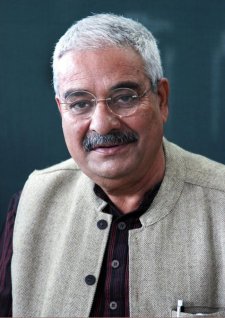 Bansi Kaul 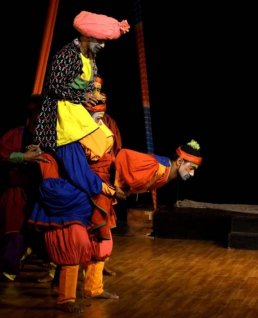 Kisse afanti ke Gujarat, Ahmedabad in particular, is not unaware of Bansida's inventive ideas in the realm of performance. With NSD students he was actively associated with the Bhavai Mela Darpana Academy organized over three decades ago and with Kailash Pandya he produced Lomadsha no Vesh, an adaptation of Ben Jonson's Volpone. Ten years later, NSD students' research project brought him here again. He guided them to be familiar with the performance style of the natives of the Dang district, economically backward but rich in its indigenous culture. With the students having learnt the basics of the difficult but very significant tribal performance style, he directed Ek Gaon ki Bhali Aurat, a Hindi adaptation of Bertolt Brecht's famous play The Good Woman of Setzuan. I recall with pleasure, over an hour long discussion we had at the residence of Kalpesh Dalal, director of Aavishkar Academy dedicated to folk dances. He stressed a couple of things. The idea of time and space in our folk forms like Bhavai, Madalya or Maach is flexible, not static as in the western drama. It allows freedom to move from one place to a distant another place and the globe becomes one space. Besides, there is a celebration of life from birth to death in the Indian culture, which is reflected in its folk forms. Also, the perspective sweeping across time and place gives the theme a universal appeal. The flexible structure, the celebratory form and the universal perspective together, he observed, make the tribal perspective as much contemporary and modern as the one by any one of us. Modernity to him meant reinventing. He did not believe in picking up a form and 'imposing it on urban theatre.' When a modern man creates something, he said, he goes back to his past with consciousness. You see much more in your childhood now than you had seen in it earlier. You can so redefine a 'traditional' form, it is reborn to you. What he did at Rang Vidushak was to go back to non-theatre forms and give them recognition. He studied the skills acrobats, jugglers and hawkers, story-tellers and jokers, even fishermen and beggars, employed. He had incidentally lived with acrobats for three years. He brought street clowns and their laughter to the centre stage. 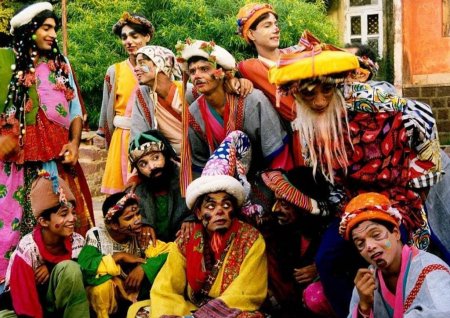 Gadho ka mela 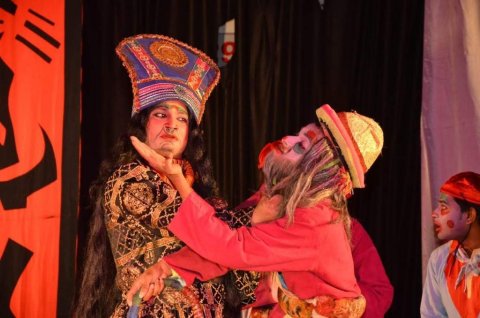 Tukke pe tukka At Rang Vidushak, he adopted an approach to actors' training that is closer to life. In Bastar, he pointed out, where tribals are in the thick forest, innumerable trees make them walk or run zigzag with involuntary movement. At Rang Vidushak, there used to be poles on the rehearsal space for them to run around without touching them. The way the madalyas walk and sit on the ground, he said, was determined by their way of living in the forest. The actors were particularly asked to not copy the physicality but to get and give a feel of their simplicity and straightforwardness, including cunningness. During our discussion, Bansi Kaul referred to the Bhavai Veshas (episodes) Asait Thaker wrote in the 14th century. Asait, he said, picked up elements of theatre from his surrounding, modernized them in his time and made theatre out of them. 'We have to be Asait Thakers,' he stressed, 'rather than try to develop an Indian theatre form from what is already a developed theatre.' 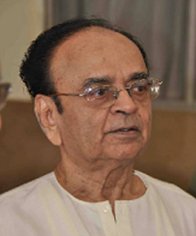
Dr. S.D. Desai, an author and a contributor to dance, drama and literary journals, is a freelance art writer. Post your comments Please provide your name and email id along with your comment. All appropriate comments posted with name and email id in the blog will also be featured in the site. |